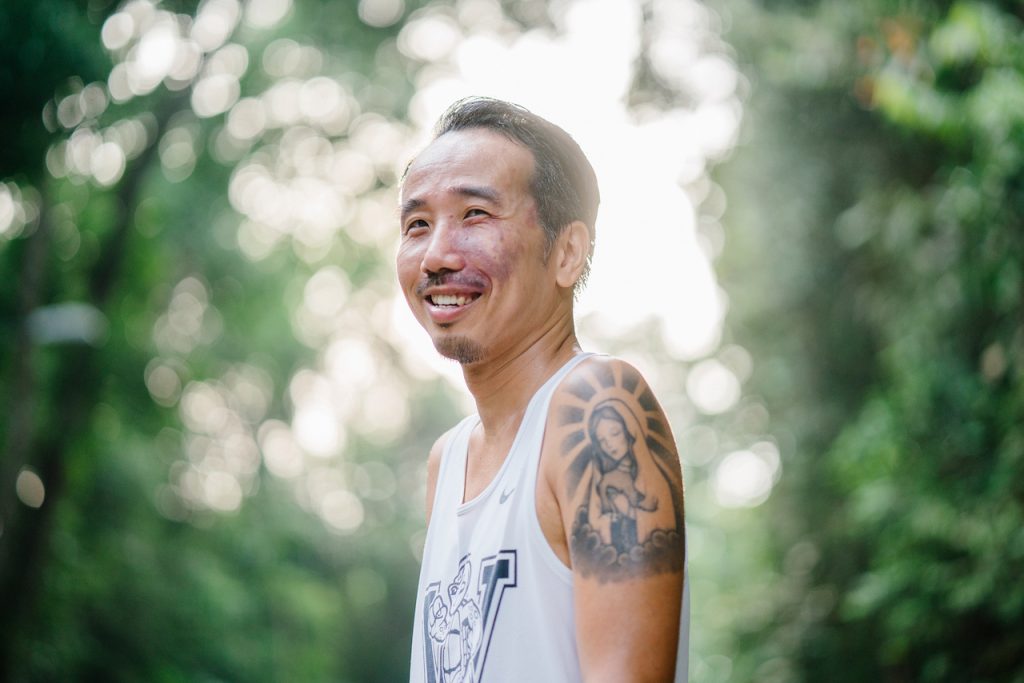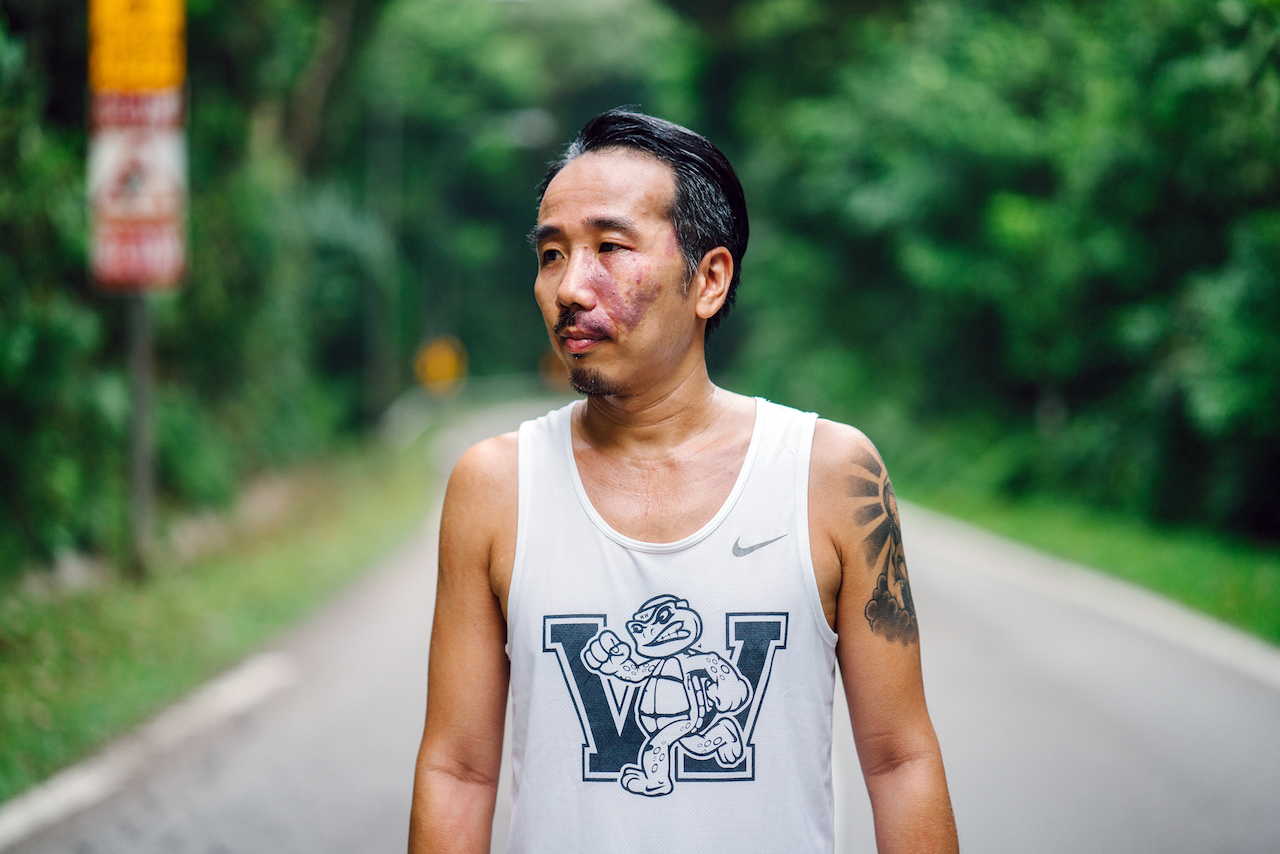When you get into a freak accident while cycling at 40 to 50 km/hr along a road that’s rumoured to be one of Singapore’s most haunted spots, you are supposed to die.
When you blackout and fall face first on the ground, six teeth knocked out, mouth awash with blood, bicycle helmet cracked over your skull, and shirt drenched from your profusely bleeding head, you are supposed to die.
And when you flatline in the middle of an emergency surgery meant to save you from the internal hemorrhaging within your brain, you are supposed to die.
But Jonathan Chan isn’t someone who does what he’s supposed to do.

And so, on the eve of Chinese New Year in 2014, Jon decided to take a quick ride with a couple of friends before work that morning. The three of them were cycling enthusiasts.
That morning, their “casual” ride began at MacRitchie Reservoir and went on till Tampines, with the trio going at almost 50 km/hr. Along Old Tampines Road, which was relatively empty that morning, Jon remembers his two friends riding ahead while he trailed at the back.
That is the last he remembers of that day before blanking out.
Till today, he hasn’t regained his memory of what happened. Everything he knows was supplemented by his two friends in the aftermath.
Apparently, Jon skidded over a pothole on the road and crashed on the left side of his bicycle. He landed on his face, his helmet was cracked, and he lost six teeth.
His friends had to pull him over to the curb and slap him to help him regain his consciousness. Then they called the paramedics, who took him to the Accident and Emergency unit at Changi General Hospital.
In the hospital, Jon’s mother was asked to come down to sign the form that would permit the doctors to perform an emergency surgery on him to stop his internal bleeding.
From the reports he read after the surgery, Jon learnt that he flatlined on the operating table and the doctors had to revive him.
Whenever he tells the story these days, he jokes, “I didn’t see the white light at the end of the tunnel though.”

But remember, Jon isn’t someone who follows the rules.
Within slightly more than a month, Jon had gotten through his physiotherapy in the hospital and was ready to be discharged. According to Jon, his doctors were “very shocked” at his quick recovery. It was, after all, only a month before that he got his skull cut open in order to drain the blood out.
Aside from the nearly invisible scars on his arms from the accident, Jon can’t carry heavy weights or squat for too long these days. He also has a scar above his left eyebrow, and a few faded scars on his left arm. The moustache on the left side of his face doesn’t grow evenly.
As for the mental and emotional repercussions, the initial shock and trauma caused him to lose some memories from his past that he eventually retrieved with the help of friends and family.
“I guess I was too tired to go through all that. I was very determined to recover quickly. I told myself I needed to get out of this. I couldn’t deal with being in that state,” he says.
“I think my will to survive carried me through. I’m someone who likes to be quick and get things done. I also regularly did high intensity training, so that gave me the mental discipline and focus, as well as physical strength to recover quicker than average.”


Jon revisited his passion for long-distance leisure running, which he had set aside when he discovered cycling. He even set a goal to complete a half-marathon under two hours—insane by anyone’s standards, but business as usual for him.
At the end of the year, true to his word, Jon completed the Standard Chartered half-marathon in 1 hour 50 minutes.
He shares, “The marathon was the turning point. It felt like a new start and a second chance for me.”
Change, for him, came in the form of quitting his job in a renowned advertising agency. After that, Jon co-founded Convey, a UX and UI digital branding studio, with his friend Cenydd Tan.
“In hindsight, I always needed to leave my previous job. I guess Singaporeans are always in our comfort zone. We don’t like to push boundaries. I needed this major event to get me out of my comfort zone,” he admits.
Jon’s confession brings to mind another story I once heard, in which a friend’s ex-colleague had gotten into a car accident. When the accident happened, the first thing she thought was that she was going to be late for a meeting with her boss, not whether she was physically okay.
Like Jon, the accident gave her the push she needed to change her life—she went to work the next day and resigned.
While inspirational stories like Jon’s serve as vicarious reminders to “do the things that we want to do” and “not to hold [ourselves] back”, he believes no one should have to live through an extreme experience to be pushed out of their comfort zone.
After all, the push can go both ways. It can help us realise we were always holding ourselves back, or it can send us over the edge for good.

The two men no longer cycle together. In fact, Jon has stopped cycling altogether, because he doesn’t want his parents to worry.
37-year-old Christopher shares, “Jon and I may have drifted slightly, but we hit it off immediately like brothers when we meet or connect. He will always occupy a special place in my life, and I, the same with him.”
And despite his traumatic accident, Jon never developed a phobia of getting back onto a bicycle. According to him, he will always love cycling.
He recalls a day shortly after his recovery, when a friend brought along her new bicycle to his house so he could check it out, and I catch him in a moment of wistfulness.
“I rode her bike for two loops around my carpark. In that moment, I felt happy again.”






